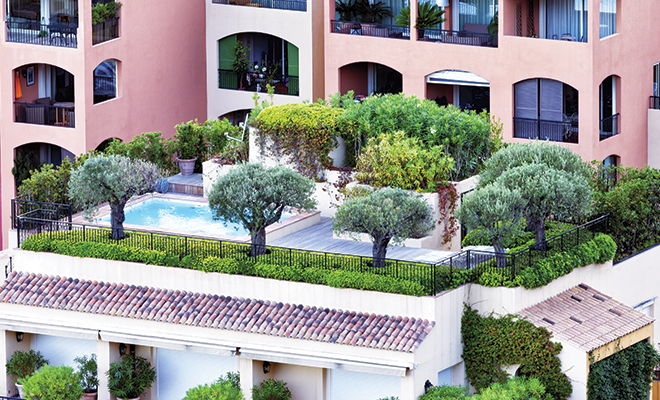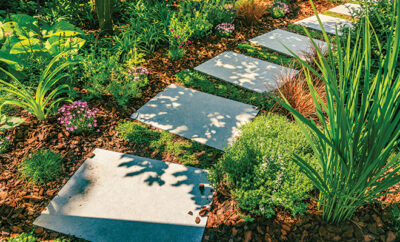
Principles to guide your home’s green viability
As the world takes measures to prevent further damage to the environment, sustainability has become increasingly important. Almost every industry is being affected–automotive, agricultural, technology; there are opportunities for improvement everywhere, and architecture is no different.
Many new commercial buildings are taking steps to go green, and this translates to residential buildings as well. Homeowners can apply the same principles businesses do when it comes to using architecture in smart ways, such as reducing energy consumption, conserving water and using green building materials. Depending on how many changes you’re willing to make to your home, you can apply any or all of these principles to create a living space that gives back to the environment.
Energy efficiency
There are countless ways to improve your home’s energy efficiency through its architecture. Green roofs, or roofs covered in grass, plants and other vegetation, are quickly becoming popular options. Roofs happen to be one of the most overlooked parts of buildings; they’re out of sight, out of mind, but because of the ample sunlight they receive, they’re the perfect spot for vegetation.
The environmental benefits to green roofs are endless: they absorb CO2 through the photosynthesis of the plants, filter the air by binding dust particles, absorb pollutants from rainwater, reduce noise by providing insulation and provide habitats for birds and other wildlife, to name a few. If drastically improving your impact on the environment isn’t reason enough to make the change, the economic benefits of green roofs are substantial. They reduce heating and cooling needs, thus reducing your energy bill, giving up to 25 percent savings for typical two- to three-story buildings in the summer, according to the American Society of Landscape Architects. They also protect your home from damage from the elements, such as UV rays, wind and extreme temperatures. They can even improve your property value!
If you’re not quite ready to overhaul the roof over your head, there are smaller steps you can take toward improving the environment and your home’s energy usage. Tree siting, or strategically planting trees around the home to add shade where the sun often hits, is a great way to keep your home insulated in a natural way. You can also add solar panels to your roof or areas of your property that get plenty of sunlight. There are many tax incentives and financial benefits to installing solar panels. Some states will even allow you to sell energy back to the power grid!
Water conservation
We all love a lush, green lawn, but it’s not always possible to achieve in harsh climates. Before you decide to turn on the sprinklers, consider landscaping techniques that can help you collect water to use for this purpose and avoid using drinkable water for landscaping. Leverage the natural systems around your home to maximize your water use. If you’re looking to make a drastic change in your landscaping, a bioswale, which is essentially a vegetated ditch that removes sand and silt from runoff, can “dramatically reduce water flowing into centralized storm water management systems, and therefore, limit the energy consumed by centralized water utilities pumping and recycling water,” according to the ASLA, and are a natural way to filter storm water to reduce pollutants and improve water quality.
If you’re looking to make smaller changes, rainwater gardens and water recycling are relatively easy to do and provide alternative solutions to reducing your water consumption. Rainwater gardens use native plants to collect and filter rainwater, while water recycling takes used water from kitchen sinks, washing machines and the like and reuses it to hydrate landscaping.
Low-waste materials
One of the best places to start on the path to sustainable architecture is in the very materials that make up your home. Think about it; new and non-recyclable home building materials create waste and consume resources when they are made and distributed, and when they are disposed of, they can’t be reused. “Waste materials create waste landscapes: landfills, massive incinerator systems, and multi-square-mile floating plastic garbage islands in the world’s oceans,” the ASLA states.
Look for materials that are permeable, recyclable and/or non-toxic. Permeable materials can replace driveways and sidewalks, which often pass contaminants into rainwater through the chemicals in concrete and tar. Wood is a commonly used recyclable material, but take care to research the source before buying. Wood that comes from responsibly managed forests is the best way to ensure your impact on the environment is small. You can also use recycled building construction waste from demolished buildings. That way, you’re not using more resources to produce more materials.
It’s easy to find ways to go green inside your home, but many people overlook the infrastructure of their home and the landscape surrounding it. Depending on how drastic a change you’re looking for, you may need to partner with an architectural firm that specializes in sustainability, or simply spend a weekend on some DIY sustainable projects. HLM
Sources: asla.org and greenroofs.com.







